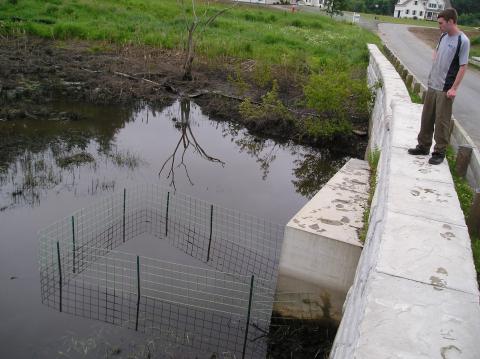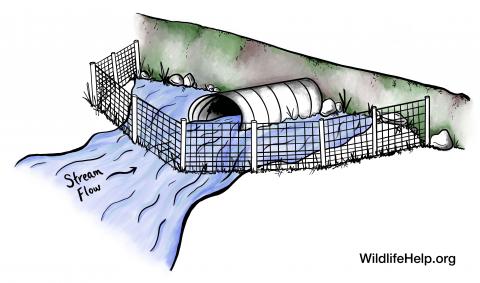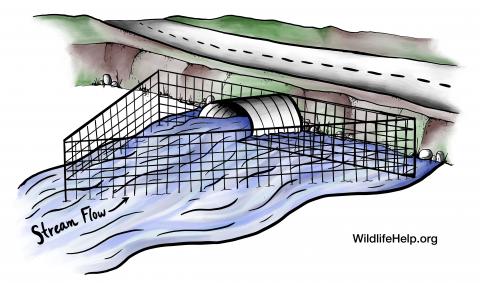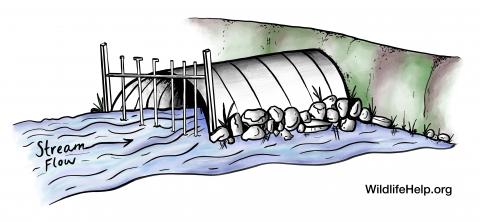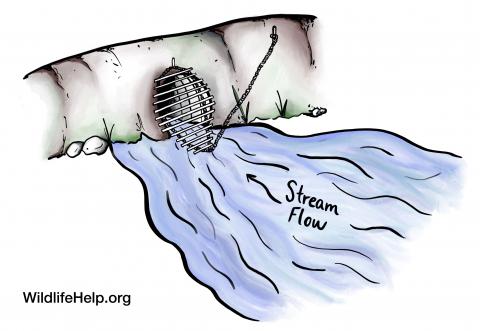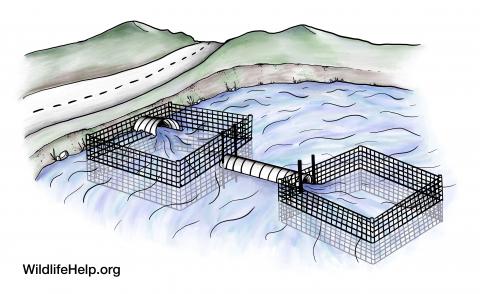Find help...
How to prevent beavers from damming culverts in New Jersey | Beaver
New Jersey > Animal is plugging drains, pipes and ditches > Beaver
How to prevent beavers from damming culverts
Step 1
Beavers can dramatically alter the environment in which they live through damming. Damming of road culverts, both at the mouth and inside the pipe, often results in flooding and can cause serious damage. Techniques used to mitigate the flooding damage caused by beavers include breaching of beaver dams, protecting road culverts with fences or guards, and controlling water levels with water flow devices. Whenever possible, methods that maintain the functions and values of the wetland habitats should be implemented first.
All these techniques require a significant amount of effort and regular maintenance to ensure desired water levels.
Initial costs to install and maintain culvert guards/meshes or water flow devices are typically less than the costs to repair roads, property or buildings damaged by flooding. Recognizing chronic or potential problem sites and taking proactive preventive measures may be more cost-effective in the long run.
Dam construction by beavers is an instinctive behavior caused by water-flow sensation and the sound associated with running water that stimulates dam building activity. Culverts, especially ones made of metal, will resonate the sound of the water rushing through them. When installing new or replacing old culverts it is recommended to go with the largest diameter smooth wall plastic culvert possible. Smaller culverts are much more susceptible to being blocked by beaver. Plastic culverts reduce the noise level and the smooth walls make removing any dam material much easier. Beavers will commonly block road culverts with sticks, mud, and rocks. Culverts blocked from the inside are difficult to clean and potentially dangerous. The use of meshes and grills, placed on both the upstream and downstream ends of the culvert, can prevent beavers from entering (but also increase the risk of floating debris catching on the grill restricting the flow into the culvert).
See the following steps and illustrations for potential solutions:
(NOTE: All of the following require at least annual (and sometimes weekly) maintenance in order to continue to function appropriately)
Step 2
Trapezoidal fence
A trapezoidal beaver fence physically excludes beavers from plugging road culvert intakes.
This fence allows water to flow over dams and through culverts while keeping culverts clear. It also prevents beavers from detecting the flow of water into the culvert.
Step 3
Triangular mesh beaver guard
Mesh beaver guards prevent beavers from building dams inside culverts. They require regular cleaning, and may block fish, but are inexpensive to install.
Make sure to take them down in winter, as they can be damaged by ice and snow.
Step 4
Removable pull-rod grill beaver guard
The removable pull rod grill prevents beavers from swimming into culverts and building dams. It is held in place by the current. Rods are inserted through a horizontal bar and driven about 6 inches into the streambed in front of the culvert. Remove the rods to clean and remove debris.
The pull rod grill is easier to remove than wire mesh because there are no horizontal bars to catch beaver-placed materials. After most material is cleared, you can pull posts out allowing the current to wash away any remaining branches, leaves, and mud.
Step 5
Culvert protector-cleaner
The culvert protector-cleaner is constructed by welding steel rods approximately 4 inches apart across a looped chain. The upper end is held by a bolt placed through the top of the culvert. The tail end is looped back and anchored on the road bank. The end of the chain can be attached to a vehicle and the grill flipped up onto the road to clear the culvert.
Source:
Laws and regulations to be aware of
While we attempt to provide guidance about state and federal regulations pertaining to specific species and control techniques, we do not provide information about local jurisdictions (city, town, county, etc.) where regulations may be more restrictive, especially as it applies to discharge of firearms, transport of animals or use of trapping equipment. Contact your local city or county government to inquire further. No guarantee is made that information (or lack of information) associated with a species or control technique is completely accurate or current. You should become familiar with federal, state and local laws before beginning any wildlife control activities. |
More solutions for beaver problems

